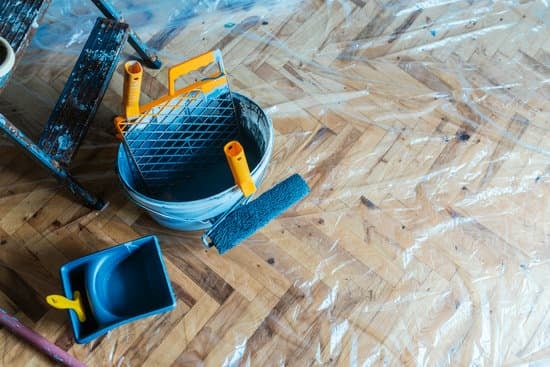When it comes to home improvement projects, homeowners are often concerned about the costs involved. However, what many people may not realize is that some of these expenses can be tax deductible. This means that you could potentially save money on your taxes by taking advantage of certain deductions related to your home improvements.
In this article, we will explore the world of tax deductible home improvement expenses in order to help you better understand which types of projects and expenses qualify for deductions. We will break down the basics of tax deductible expenses and discuss the differences between primary residence and rental property deductions. Additionally, we will delve into the distinction between repairs and improvements, as well as explore specific categories such as energy efficiency upgrades, home office deductions, and medical accessibility improvements.
To ensure that you can make the most of your eligible deductions, we will also provide tips on documenting your expenses and advice on understanding any limits or restrictions that may apply. Finally, we will emphasize the importance of consulting a tax professional who can offer expert guidance tailored to your unique situation.
By understanding which home improvement expenses are tax deductible, you can make informed decisions about your projects and potentially enjoy valuable financial benefits. So let’s dive in and discover how you can leverage these deductions to make your home improvements work for both your living space and your wallet.
Overview of Tax Deductible Expenses
When it comes to tax deductions for home improvement expenses, it is important to have a clear understanding of what expenses qualify. In this section, we will break down the basics of tax deductible expenses, so that homeowners can make informed decisions about their renovations.
Tax deductible home improvement expenses refer to costs that can be deducted from your taxable income, reducing the amount of tax you owe. It is important to note that not all home improvement expenses are tax deductible. To be eligible for a deduction, the expense must meet certain criteria set by the Internal Revenue Service (IRS).
One common example of a tax deductible expense is energy-efficient upgrades. This includes installing solar panels, energy-efficient windows and doors, insulation, and more. These improvements not only benefit the environment but also provide financial incentives in the form of tax deductions or credits.
Another type of expense that may be tax deductible is home office improvements. If you use a portion of your home exclusively for business purposes, such as a dedicated office space, you may be able to deduct a portion of the costs associated with renovating or maintaining that space.
| Expense Type | Description |
|---|---|
| Energy-Efficient Upgrades | Installation of solar panels, energy-efficient windows/doors, insulation |
| Home Office Improvements | Renovations and maintenance for a dedicated office space used for business purposes |
It’s important to keep in mind that deductibility rules can vary depending on factors such as whether your property is a primary residence or rental property, as well as whether an expense falls under repairs or improvements. We will explore these distinctions in greater detail in the following sections of this article. By understanding the basics of tax deductible expenses, homeowners can make informed decisions about their home improvement projects and potentially save money on their taxes.
Primary Residence vs. Rental Property
When it comes to tax deductible home improvement expenses, it’s important to understand that the rules and deductions can vary depending on whether you are making improvements to your primary residence or a rental property. The IRS has different guidelines for each scenario, so it’s crucial to be aware of these distinctions in order to maximize your deductions.
Primary Residence Deductions
For homeowners making improvements to their primary residence, there are some potential tax deductions available. The most common tax deductions include any mortgage interest paid on a loan used to finance eligible improvements, as well as certain energy-efficient upgrades.
Additionally, if you need to make modifications for medical reasons, such as installing ramps or widening doors for accessibility, those expenses may also qualify for deductions. It’s important to note that these deductions typically apply if the improvements increase the value of your home or prolong its useful life.
Rental Property Deductions
On the other hand, if you own a rental property and are making improvements on it, you will generally have more opportunities for tax deductions. Many of the same deductions that apply to primary residences also apply to rental properties: mortgage interest payments and energy-efficient upgrades and accessibility modifications can all be deducted.
In addition, expenses related to repairs and general maintenance of the property can usually be deducted in full during the same year they were incurred. Keep in mind that capital improvements (such as adding a new roof or renovating a kitchen) must be depreciated over several years.
It is worth noting that there are specific rules regarding how much of certain expenses can be immediately deducted versus capitalized and depreciated over time for both primary residences and rental properties. To ensure you’re following proper procedures and receiving all eligible deductions, consulting a tax professional who is knowledgeable about real estate tax laws is highly recommended.
The next section will delve into the sometimes fine line between repairs and improvements when determining eligibility for tax deductions.
Repairs vs. Improvements
When it comes to tax deductions for home improvement expenses, it’s crucial to understand the difference between repairs and improvements. This is because the IRS has distinct rules for each category, and being able to determine which expenses fall into which category can make a significant impact on your eligibility for deductions.
Repairs: Restoring Functionality
Repairs are defined as expenses that are necessary to restore or maintain the functionality of your home. These could include fixing a broken window, repairing a leaky roof, replacing a faulty electrical outlet, or patching up cracks in the walls. The key point here is that repairs are meant to keep your home in good working condition and do not add value or prolong its useful life.
While repairs themselves may not be eligible for tax deductions, they can still indirectly contribute to deductible expenses if they are made on certain qualified home improvements. It’s important to keep track of all repair expenses as they may be used to calculate the basis for any future improvements.
Improvements: Adding Value and Enhancing Quality
On the other hand, improvements refer to expenses that increase the value or enhance the quality of your property. This includes any renovations or additions made with the intention of updating or modernizing your home. Examples of home improvements that may be eligible for tax deductions include installing energy-efficient windows, adding a new deck or patio, upgrading HVAC systems, or remodeling kitchens and bathrooms.
It’s important to note that not all improvements immediately qualify for tax deductions. Instead, these expenses are typically added to your property’s basis (which is generally what you paid for it) and may affect potential gains when you sell your home in the future. However, there are specific situations where improvements can become eligible for immediate deductions, such as energy-efficient upgrades.
Navigating the Fine Line
Determining whether an expense falls under repairs or improvements can sometimes be challenging. The general rule of thumb is that if the expense restores the functionality of an item in your home to its original condition, it is likely a repair. On the other hand, if the expense adds value, prolongs the useful life, or creates a new feature or enhancement, it is typically considered an improvement.
To ensure you correctly categorize your expenses and maximize your deductions, it’s advisable to consult with a tax professional or CPA who specializes in home improvements. They can provide expert guidance and help you navigate through the fine line between repairs and improvements when it comes to tax deductions. Their knowledge and experience will be invaluable in ensuring that you make informed decisions regarding your deductions while staying compliant with IRS regulations.
Tax Deductible Home Improvements
One of the most popular types of tax deductible home improvements is those that boost energy efficiency and promote sustainability. These improvements not only help reduce carbon footprint and conserve natural resources, but they also provide homeowners with financial benefits through various tax incentives and deductions. This section will explore the different ways in which homeowners can make energy-efficient improvements to their homes and take advantage of tax benefits.
One common home improvement that is eligible for tax deductions is the installation of energy-efficient windows, doors, and skylights. These improvements help reduce energy loss by improving insulation and preventing drafts. Homeowners can typically claim a tax credit for a percentage of the cost of these upgrades under the Residential Energy Efficient Property Credit.
Another significant way to boost energy efficiency and qualify for tax deductions is by installing solar panels or wind turbines. The federal government offers a generous investment tax credit (ITC) for residential renewable energy systems. The ITC allows homeowners to claim up to 26% of the installation cost as a tax credit, reducing their overall taxes owed.
In addition to these individual improvements, homeowners may also be eligible for tax deductions if they invest in whole-home energy efficiency upgrades. This can include adding insulation, upgrading heating and cooling systems, or installing smart thermostats. These improvements not only lower energy usage but also qualify for the Residential Energy Property Credit, which allows homeowners to claim up to 10% of eligible expenses as a tax credit.
| Tax Deductible Home Improvement | Tax Benefit |
|---|---|
| Installation of energy-efficient windows, doors, and skylights | Residential Energy Efficient Property Credit |
| Installation of solar panels or wind turbines | Investment Tax Credit (ITC) |
| Whole-home energy efficiency upgrades | Residential Energy Property Credit |
By taking advantage of these tax deductions for energy-efficient home improvements, homeowners not only contribute to a greener future but also save money on their taxes. It is crucial for individuals considering these improvements to familiarize themselves with the specific requirements and restrictions of each tax benefit, as well as consult a tax professional for personalized advice and guidance. Next, we will explore how homeowners can utilize their home office space to further maximize their tax deductions.
Home Office Deductions
Many people now have the opportunity to work from home, whether it’s full-time or part-time. As a result, there has been an increase in individuals transforming a space in their home into a dedicated home office. What many people may not realize is that they may be able to deduct some of their home office expenses on their taxes.
When it comes to claiming a home office deduction, there are specific requirements that must be met. First and foremost, the space must be used regularly and exclusively for business purposes. This means that you can’t use your dining room table as an office during the day and then use it for family dinners at night. The space should also be the principal place of your business or where you meet with clients or customers.
If you meet these requirements, you may be eligible to deduct some of your home office expenses. These expenses can include things like rent or mortgage interest, utilities, homeowners insurance, and even maintenance costs. However, it’s important to note that there are limitations on how much you can deduct and how to calculate these deductions.
To help ensure that you maximize your home office deductions and comply with IRS guidelines, here are a few key tips:
- Keep detailed records: It’s essential to maintain good record-keeping practices when it comes to your home office expenses. This includes keeping all receipts and invoices related to your purchases and payments.
- Calculate the percentage of business use: Since most people don’t use their entire homes solely for business purposes, it’s necessary to determine the percentage of your home that is used as a workspace.
- Consider using simplified methods: The IRS offers two simplified methods for calculating your home office deduction – the simplified option and the regular method. It may be beneficial to consult with a tax professional to determine which method is best for your situation.
By understanding the requirements and guidelines for claiming a home office deduction, you can potentially save a significant amount of money on your taxes. However, it’s important to consult with a tax professional who is knowledgeable in this area to ensure that you are accurately maximizing your deductions while staying compliant with IRS regulations.
Medical Necessity
Understanding the Importance of Accessibility
When it comes to home improvements, one aspect that may be overlooked but is important to consider is accessibility. Making certain modifications to your home for medical reasons can be tax deductible. These modifications are aimed at ensuring that individuals with disabilities can have independent and safe access within their homes. It is important to understand the guidelines and requirements set by the Internal Revenue Service (IRS) in order to qualify for these deductions.
Examples of Deductible Home Modifications
There are various modifications that can be considered as deductible home improvements for accessibility. Some common examples include installing wheelchair ramps, widening doorways, adding handrails or grab bars, modifying bathrooms for better accessibility, and installing stair lifts or elevators. These modifications are often necessary for individuals with mobility issues or physical disabilities to move around their homes safely and comfortably.
It is worth noting that the IRS has specific criteria that must be met in order for these modifications to qualify as tax deductible expenses. Generally, the modifications must be directly related to a medical condition or disability, which makes them necessary for everyday living or essential medical care. Consulting with a tax professional who specializes in disability deductions can help you navigate through the guidelines and determine your eligibility.
Documenting Your Expenses
As with any tax deduction, it is crucial to keep detailed records of your expenses related to these accessible home improvements. This includes keeping receipts from contractors, invoices for materials purchased, and any other relevant documentation demonstrating the costs incurred during the modification process. Additionally, keeping a copy of any doctor’s prescriptions or recommendations that support the necessity of these improvements can strengthen your case when claiming the deduction.
By documenting your expenses thoroughly and providing evidence of medical necessity, you will not only ensure compliance with IRS regulations but also maximize your chances of receiving a favorable deduction for these accessibility-related home improvements.
Documenting Your Expenses
When it comes to maximizing your tax deductions for home improvement expenses, proper documentation is key. Keeping detailed and organized records of your expenses can help ensure that you claim all eligible deductions and avoid any potential problems with the IRS. Here are some record-keeping tips to help you make the most of your tax deductions:
- Keep Receipts: It’s important to keep all receipts related to your home improvement expenses. This includes receipts for materials, contractor fees, permits, and any other costs incurred during the project. Make sure the receipts are clear and legible, and store them in a safe place where they won’t get lost or damaged.
- Maintain a Home Improvement File: Create a dedicated file for all documents related to your home improvement projects. This can include contracts with contractors, invoices, before-and-after photos, and any other relevant documentation. Having everything in one place will make it easier to track your expenses and provide proof if necessary.
- Separate Personal from Business Expenses: If you’re using part of your home for business purposes (e.g., a home office), it’s important to separate personal and business expenses. Keep track of all expenses related to the business portion of your home separately from personal expenses. This will make it easier when it comes time to calculate your deductions.
| Tax Deductible Expense | Description |
|---|---|
| Receipts | Keep all receipts related to home improvement expenses. |
| Home Improvement File | Create a dedicated file for all documents related to the projects. |
| Separate Personal from Business Expenses | Keep track of expenses related to the business portion of your home separately. |
By following these record-keeping tips, you can ensure that you have all the necessary documentation to support your tax deductions for home improvement expenses. Remember, it’s always best to consult with a tax professional or accountant to make sure you are claiming all eligible deductions and complying with any specific rules or regulations. With proper records in hand, you can confidently benefit from the financial advantages of tax deductible home improvements.
Understanding Limits and Restrictions
One important aspect of taking advantage of tax deductible home improvement expenses is understanding the limits and restrictions that may apply. While certain expenses may be eligible for deductions, it is crucial to know the specific criteria and requirements to ensure you qualify. By familiarizing yourself with these limitations, you can avoid making costly mistakes and potentially maximize your deductions.
To begin, it is essential to understand that there are specific limits on the amount of deductions you can claim for home improvement expenses. For example, for qualified residential energy-efficient property improvements, you can deduct up to 30% of the cost with no maximum limit. However, there are separate caps for different types of improvements. It is important to consult IRS guidelines or speak with a tax professional to determine the limits applicable to your specific situation.
Additionally, some deductions may be subject to income restrictions. Certain energy-efficient home improvements, such as solar panels or geothermal heat pumps, have income phase-out limits. This means that if your income exceeds a certain threshold, you may not be eligible for the full deduction or any deduction at all. Again, consulting IRS guidelines or a tax professional can provide clarity on these income limitations.
Furthermore, it is crucial to keep in mind that not all home improvement expenses are eligible for deductions. While renovations and repairs necessary for maintenance or other qualifying reasons may qualify for deductions, cosmetic enhancements generally do not meet the criteria. It is important to carefully review IRS guidelines or seek advice from a tax professional before assuming an expense will be deductible.
Consulting a Tax Professional
When it comes to understanding tax deductible home improvement expenses, consulting a tax professional can provide expert advice for maximizing deductions. While it is possible to research and understand the basics of tax deductions on your own, a tax professional has the knowledge and experience to navigate complex tax laws and ensure you are taking full advantage of eligible deductions.
One key benefit of consulting a tax professional is their ability to provide personalized guidance based on your specific circumstances. They can assess your situation and help you identify all potential deductions that apply to your home improvement expenses. They are well-versed in the rules and restrictions surrounding deductible expenses, ensuring that you stay within legal boundaries while maximizing your savings.
Another valuable aspect of working with a tax professional is their expertise in documentation requirements. Keeping accurate records and receipts is crucial when claiming home improvement deductions. A tax professional can guide you on what types of documentation are required for different types of expenses, such as receipts for materials or invoices from contractors. They can also advise you on how long you should keep these records in case of an audit.
Additionally, consulting a tax professional can provide peace of mind by avoiding common mistakes that could raise red flags with the IRS. They can review your return before filing to verify that everything is accurate and complete, reducing the chances for errors or omissions that might trigger an audit or penalty. With their knowledge of current tax laws and regulations, they can make sure any changes in legislation are properly accounted for in your return.
Conclusion
In conclusion, understanding and leveraging tax deductible home improvement expenses can provide significant financial benefits. By taking advantage of eligible deductions, homeowners can reduce their taxable income and potentially receive a larger tax refund or owe less in taxes. However, it is crucial to be aware of the rules and regulations surrounding these deductions to ensure compliance with the IRS.
The first step in maximizing tax deductions for home improvement expenses is to differentiate between repairs and improvements. While repairs are generally not eligible for deductions, improvements that add value to the property or make it more energy-efficient may qualify. This includes upgrades such as installing solar panels, improving insulation, or upgrading HVAC systems.
Homeowners should also be mindful of the different rules that apply to primary residences versus rental properties. Deductions for rental properties can often be more generous, but there are specific conditions that must be met. It is essential to consult with a tax professional or do thorough research to fully understand the eligibility criteria for each type of property.
Another lucrative deduction category is home office expenses. Transforming a space within the home into a dedicated office area can open up opportunities for deductions related to utilities, maintenance, and even mortgage interest. Keeping detailed records and documenting all expenses is crucial to support any claims made during tax filing season.
Overall, leveraging tax deductible home improvement expenses requires careful planning and compliance with IRS regulations. Consulting a tax professional specializing in this area can provide valuable guidance and ensure you are maximizing your eligible deductions. By taking advantage of these financial benefits, homeowners can save money on their taxes while simultaneously improving their living space or investment property.
Frequently Asked Questions
What are the tax breaks for home improvements in 2023?
As of now, there are no specific tax breaks for home improvements in 2023. However, it’s important to note that tax laws and regulations can change over time, so it’s advisable to stay updated on any potential tax breaks or deductions that may be available for home improvements.
Consulting with a tax professional or researching the latest updates from the relevant tax authorities can provide more accurate information regarding any possible tax benefits for home improvements.
Can you write off new flooring on your taxes?
In general, new flooring is not typically directly eligible for a tax write-off unless it qualifies under specific circumstances. The Internal Revenue Service (IRS) considers flooring as part of the overall value of a home rather than an immediate deductible expense.
However, if you use your home office regularly and exclusively for business purposes, you may be able to deduct some of the costs associated with new flooring as a part of your home office expenses. It is important to consult with a tax professional or refer to IRS guidelines to determine if your particular situation allows for such deductions.
Is painting your house tax-deductible?
Painting your house is generally not considered a deductible expense for income taxes unless the painting is done specifically for business purposes or as part of ongoing rental property maintenance. If you own a rental property and repaint it between tenants or regularly update its appearance, these expenses may be deducted as ordinary and necessary costs related to managing and maintaining rental real estate properties.
On the other hand, if you paint your personal residence solely for aesthetic reasons or normal upkeep, those expenses cannot be claimed as tax deductions. Again, consulting with a qualified tax expert or referring to IRS guidelines can provide clear guidance on whether specific circumstances make painting your house eligible for deductions in your situation.

I’m thrilled to have you here as a part of the Remodeling Top community. This is where my journey as an architect and remodeling enthusiast intersects with your passion for transforming houses into dream homes.





